[press release]
Canada Post and The 519 unveil stamp commemorating the road to marriage equality
Stamp is the fourth in a set of 10 that will showcase historic moments from the last 50 years in celebration of Canada 150
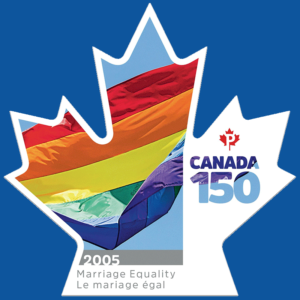 TORONTO, May 9, 2017 – At an event today in downtown Toronto, Canada Post unveiled a stamp commemorating the 2005 passage of the Civil Marriage Act, which made marriage equality the law throughout Canada. Grassroots activists, government officials and community members attended the unveiling, catching the first glimpse of the new stamp, which features the iconic rainbow symbol. The unveiling was held at and in partnership with The 519, a City of Toronto agency committed to the health, happiness and full participation of LGBTQ communities.
TORONTO, May 9, 2017 – At an event today in downtown Toronto, Canada Post unveiled a stamp commemorating the 2005 passage of the Civil Marriage Act, which made marriage equality the law throughout Canada. Grassroots activists, government officials and community members attended the unveiling, catching the first glimpse of the new stamp, which features the iconic rainbow symbol. The unveiling was held at and in partnership with The 519, a City of Toronto agency committed to the health, happiness and full participation of LGBTQ communities.
The marriage equality stamp is the fourth in a set of 10 that Canada Post is issuing to celebrate Canada’s 150th year since Confederation. Collectively the stamps highlight historic moments that have taken place in our nation over the past 50 years. Canada Post’s stamp advisory committee, which includes historians, collectors and artists, selected these 10 milestones that together have helped shape the story of Canada.
The road to the legislation
Twelve years ago, on February 1, 2005, the Civil Marriage Act was introduced in Parliament as Bill C-38. After it was passed in the House of Commons and then in the Senate, the bill received Royal Assent on July 20, 2005, and marriage equality officially became the law. 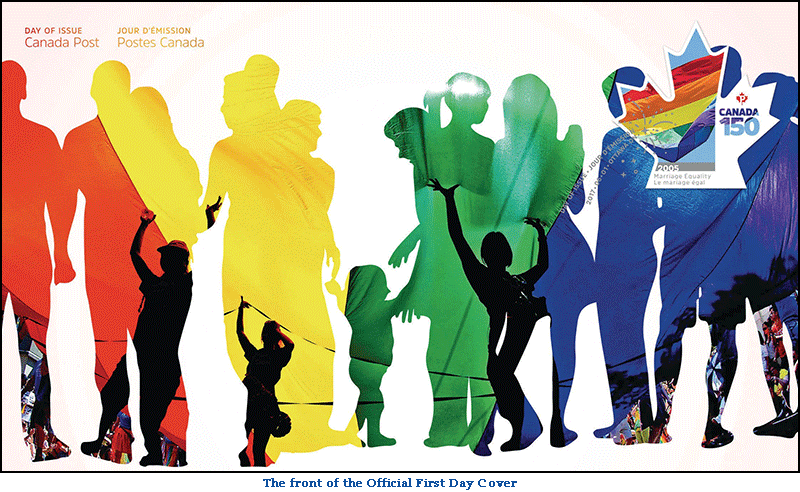 But the road to achieving marriage equality in Canada began long before 2005. For decades, LGBTQ activists and supporters from coast to coast to coast had fought for the rights of their communities, including the right to marry. In the late 1990s, the community began to achieve significant victories.
But the road to achieving marriage equality in Canada began long before 2005. For decades, LGBTQ activists and supporters from coast to coast to coast had fought for the rights of their communities, including the right to marry. In the late 1990s, the community began to achieve significant victories.
For instance, in 1996, the federal government passed Bill C-33 adding sexual orientation to the Canadian Human Rights Act; three years later, the Supreme Court of Canada ruled that same-sex couples should have the same benefits and obligations as opposite-sex common-law couples from social programs that they contribute to. A year later, Parliament passed Bill C-23 that made the Court ruling law.
Marriage equality debate takes centre stage
In early 2001, the battle for the right to marry took centre stage, after Reverend Brent Hawkes married two same-sex couples in a ceremony in Toronto. When the City refused to issue marriage licenses for these unions, it set off a series of heated court battles and public debate. The legal challenges culminated on June 10, 2003, when the Ontario Court of Appeal upheld a lower court ruling that prohibiting same-sex couples from marrying was a violation of the Charter of Rights and Freedoms. Within hours of the decision, Michael Leshner and Michael Stark were married in Toronto, the first same-sex couple to wed after the legislation. 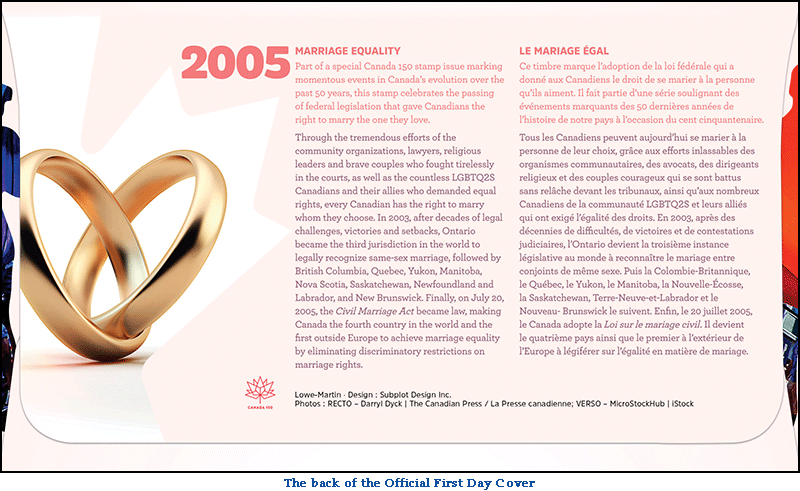 Similar court battles were also taking place in provinces across the country, and more provincial courts issued rulings legalizing marriage equality: B.C. in July 2003, followed by Quebec, Manitoba, and Nova Scotia in 2004. Finally, on July 20, 2005, the government of Canada passed the federal legislation that legalized marriage equality across the country, making Canada the fourth country in the world and the first outside of Europe to grant same-sex couples the right to marry the one they loved.
Similar court battles were also taking place in provinces across the country, and more provincial courts issued rulings legalizing marriage equality: B.C. in July 2003, followed by Quebec, Manitoba, and Nova Scotia in 2004. Finally, on July 20, 2005, the government of Canada passed the federal legislation that legalized marriage equality across the country, making Canada the fourth country in the world and the first outside of Europe to grant same-sex couples the right to marry the one they loved.
Today, with support continuing to grow across the globe, more than 20 countries have legalized same‑sex marriage on the national level. To hear more from LGBTQ community members and activists about this fight for equality, please visit canadapost.ca/canada150. To learn more about the work of The 519, please visit www.The519.org.
The next stamp in the Canada 150 set will be unveiled in Regina on May 16. The remaining stamps will be revealed individually at cities across the country, the last of them on June 1.
About the stamps
Each of the 10 maple-leaf shaped die-cut PermanentTM domestic-rate stamps measures 40 mm x 40 mm and is printed in 6 colours plus tagging. The self-adhesive stamps are available in a booklet of 10 (4 million stamps). A gummed pane of 10 stamps, with circle perforations 4.5 cm in diameter, is also available (80,000 panes). Official First Day Covers, one for each stamp design and each cancelled in OTTAWA ON, are available in a pack of 10 (10,000 packs). The stamp issue was designed by Roy White and Liz Wurzinger of Subplot Design Inc. in Vancouver, B.C., and printed by the Lowe-Martin Group.
-0-
[press release]
Celebrating the Right to Equal Marriage and Continuing the Work for LGBTQ2S Human Rights
The 519 celebrates The Civil Marriage Act 2005 with the launch of Canada Post’s new commemorative stamp.
 TORONTO, May 9, 2017 /CNW/ – The 519 is excited to be partnering with Canada Post for an event that will highlight the struggles for marriage equality in Canada, and celebrate this important moment in the country’s history. In this event, as part of the Canada 150 celebrations, Canada Post is releasing a new stamp to commemorate the hard-fought right of equal marriage in Canada.
TORONTO, May 9, 2017 /CNW/ – The 519 is excited to be partnering with Canada Post for an event that will highlight the struggles for marriage equality in Canada, and celebrate this important moment in the country’s history. In this event, as part of the Canada 150 celebrations, Canada Post is releasing a new stamp to commemorate the hard-fought right of equal marriage in Canada.
During the struggle for equal marriage in Canada, The 519 served our communities by providing free, accommodating non-judgemental space where individuals, organizations, activists, and non-profit groups were able to meet, organize and work towards the goal of equal marriage. Many of our members and staff were an active part of the movement and we are proud to have been part of that journey and legacy.
Today, more than ever, The 519 continues to provide space for change through a number of important programs and services to meet the emerging needs of the LGBTQ2S communities. Today that space also reflects our leadership in building the capacity of public and private organizations and institutions to create inclusive spaces of their own. We also continue to work towards finding systemic solutions that address the social and economic barriers faced by the LGBTQ2S communities.
The fight for equal marriage that culminated in the Civil Marriage Act in 2005 represents the struggle and hard work of those who were at the forefront, but that time in history also stands for the power of working together and creating meaningful dialogue between the people, civil society, government and the courts. The 519 continues to believe in that power of conversation and is working even harder today to create a world where matters of equality and freedom are discussed and resolved with openness and love.
To know about our programs and services, our activities during Pride Toronto, or to learn more about our capacity building initiatives for organizations, media or general public, please contact us.
About The 519:
The 519 is a City of Toronto agency and a registered charity committed to the health, happiness and full participation of the LGBTQ communities in Toronto and beyond. We have an innovative model of Service, Space and Leadership and through our programs, services, and capacity building initiatives – we strive to make a real difference in people’s lives while working to promote inclusion, understanding and respect.
 When the opening whistle was sounded on March 28th 1932, no one could have anticipated that the 20th Maccabiah would take place in the State of Israel 85 years later, with 10,000 participating athletes from 80 countries, competing in 40 different sports categories, and accompanied by over 20,000 delegates and family members.
When the opening whistle was sounded on March 28th 1932, no one could have anticipated that the 20th Maccabiah would take place in the State of Israel 85 years later, with 10,000 participating athletes from 80 countries, competing in 40 different sports categories, and accompanied by over 20,000 delegates and family members. This year, the 20th Maccabiah will mark 50 years of the unification of Jerusalem, the beating heart of Israel. The opening ceremony, which will take place in the Teddy stadium in Jerusalem, will salute the greatest symbols of Jewish identity through the ages.
This year, the 20th Maccabiah will mark 50 years of the unification of Jerusalem, the beating heart of Israel. The opening ceremony, which will take place in the Teddy stadium in Jerusalem, will salute the greatest symbols of Jewish identity through the ages.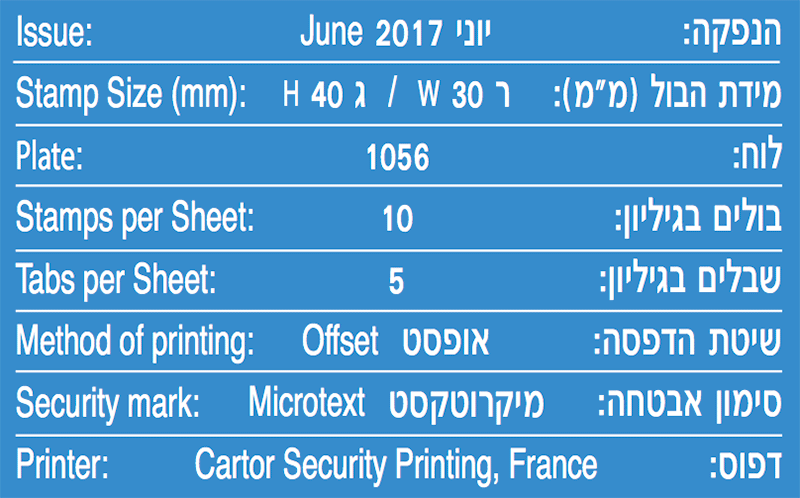

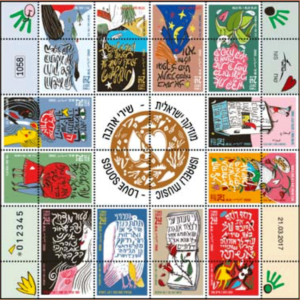 The people of Israel love to sing songs of love: love for God, love for their homeland, love for the world, love between a man and a woman. Some of the most beautiful poetic verses about love are found in the biblical Song of Songs. The Levites sang songs of love for God in the Temple. Through good and bad, throughout the world, during the Holocaust and the subsequent revival of the Jews, in war and in peace, the Jewish people have never stopped singing love songs.
The people of Israel love to sing songs of love: love for God, love for their homeland, love for the world, love between a man and a woman. Some of the most beautiful poetic verses about love are found in the biblical Song of Songs. The Levites sang songs of love for God in the Temple. Through good and bad, throughout the world, during the Holocaust and the subsequent revival of the Jews, in war and in peace, the Jewish people have never stopped singing love songs. Lechol Echad Yesh (Everyone Has)
Lechol Echad Yesh (Everyone Has) 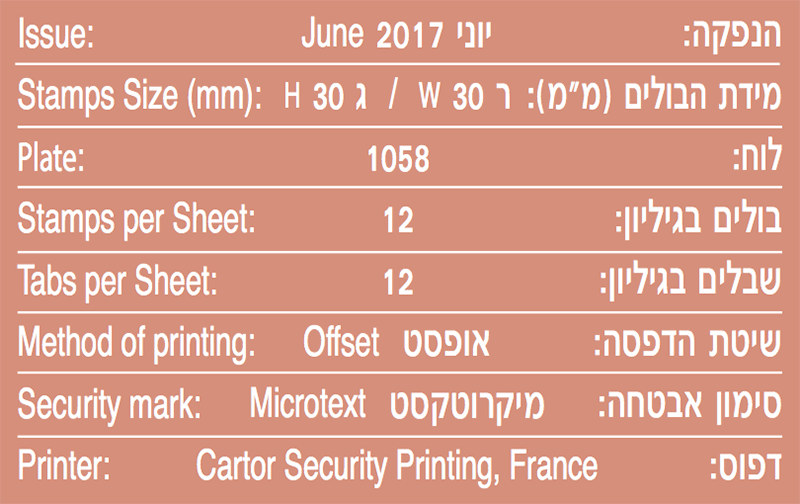
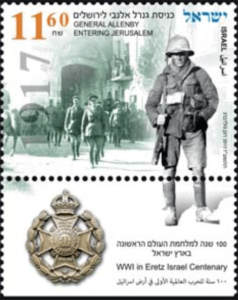 When WWI broke out in August 1914, the Ottoman Empire joined the Central Powers (Germany and Austria) against the Allied Countries (Britain, France and Russia). The Great War, as it was called at the time, lasted for more than four years and fundamentally changed world history, including the status of Eretz Israel.
When WWI broke out in August 1914, the Ottoman Empire joined the Central Powers (Germany and Austria) against the Allied Countries (Britain, France and Russia). The Great War, as it was called at the time, lasted for more than four years and fundamentally changed world history, including the status of Eretz Israel. In late October 1917, the British surprised the Turkish forces by attacking the city of Beer Sheba and succeeded in breaking through the front line. British forces pressed on quickly, fighting intensely against the retreating Turks as they tried to establish numerous new lines of defense. By early December the southern coast had been conquered and the British reached the gates of Jerusalem.
In late October 1917, the British surprised the Turkish forces by attacking the city of Beer Sheba and succeeded in breaking through the front line. British forces pressed on quickly, fighting intensely against the retreating Turks as they tried to establish numerous new lines of defense. By early December the southern coast had been conquered and the British reached the gates of Jerusalem.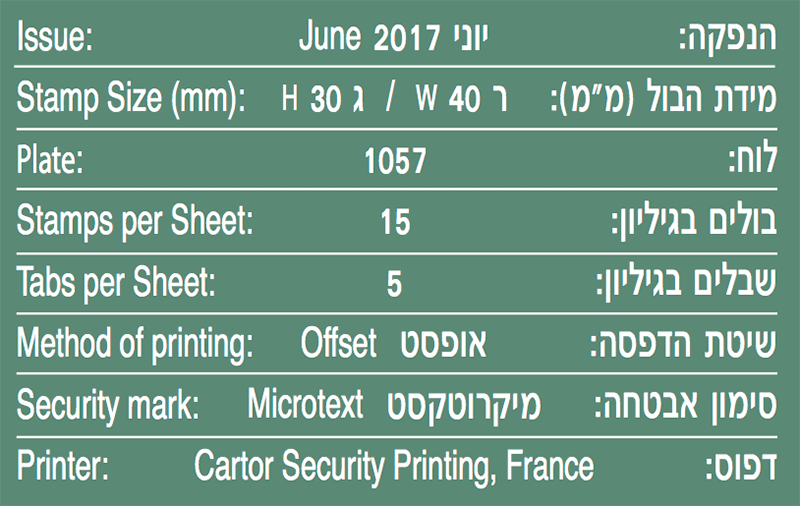
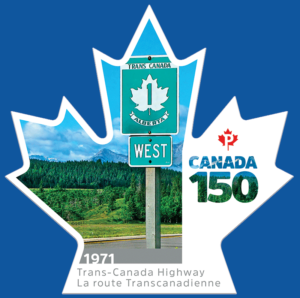 REGINA – Country music star Dean Brody, while on tour, unveiled a stamp today that captures the Trans-Canada Highway, the 8,000-kilometre ribbon of adventures, dreams and memories – and a key economic artery for Canadian business.
REGINA – Country music star Dean Brody, while on tour, unveiled a stamp today that captures the Trans-Canada Highway, the 8,000-kilometre ribbon of adventures, dreams and memories – and a key economic artery for Canadian business.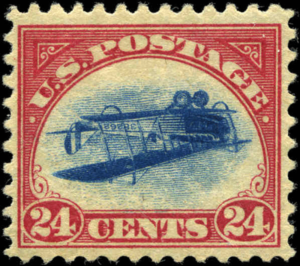 The Inverted Jenny stamp stolen in 1955 and
The Inverted Jenny stamp stolen in 1955 and 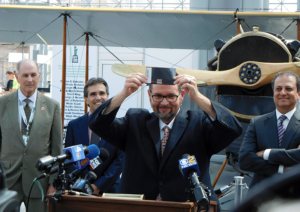 The boards of the two organizations decided last fall to sell the stamp recovered in 2016. The auction was conducted by the Robert A. Siegel firm. Bids were received by telephone, Internet and live bidding. The winning bid came in over the phone.
The boards of the two organizations decided last fall to sell the stamp recovered in 2016. The auction was conducted by the Robert A. Siegel firm. Bids were received by telephone, Internet and live bidding. The winning bid came in over the phone. ition 76 was $150,000-$200,000, well below the final price. No doubt its notoriety added to the value.
ition 76 was $150,000-$200,000, well below the final price. No doubt its notoriety added to the value.
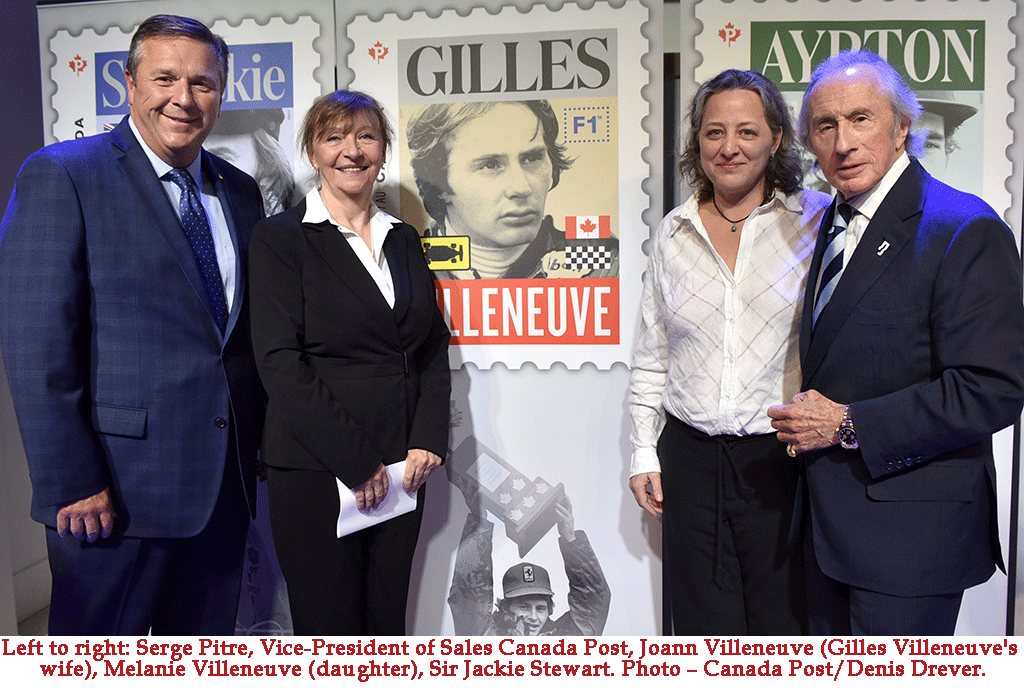 The F1™ in Canada stamps celebrate 50 years of the race in this country by honouring five winning drivers, one for each decade of F1 in Canada: Sir Jackie Stewart (Scotland), Gilles Villeneuve (Canada), Ayrton Senna (Brazil), Michael Schumacher (Germany) and Lewis Hamilton (England).
The F1™ in Canada stamps celebrate 50 years of the race in this country by honouring five winning drivers, one for each decade of F1 in Canada: Sir Jackie Stewart (Scotland), Gilles Villeneuve (Canada), Ayrton Senna (Brazil), Michael Schumacher (Germany) and Lewis Hamilton (England). Sir Jackie Stewart
Sir Jackie Stewart Gilles Villeneuve
Gilles Villeneuve Ayrton Senna
Ayrton Senna the sport’s history. Schumacher raced F1 from 1991 to 2006 and 2010 to 2012. In 308 races, he registered 91 wins, took 155 podiums, 68 poles and a record seven World Championships. He won his first World Championship in 1994 and his second in 1995. After breaking his leg in 1999, he mounted a comeback that saw him win five consecutive World Championships from 2000 to 2004. He retired at the end of 2006 but returned to race from 2010 to 2012.
the sport’s history. Schumacher raced F1 from 1991 to 2006 and 2010 to 2012. In 308 races, he registered 91 wins, took 155 podiums, 68 poles and a record seven World Championships. He won his first World Championship in 1994 and his second in 1995. After breaking his leg in 1999, he mounted a comeback that saw him win five consecutive World Championships from 2000 to 2004. He retired at the end of 2006 but returned to race from 2010 to 2012. raw ability, few drivers compare to the man who represents the fifth decade. Hamilton won four races in his rookie season in 2007 and finished on the podium in the first nine races of his brilliant, ongoing career. In his 193 starts, the three-time World Champion has recorded 55 wins, 108 podiums and 64 poles. Hamilton has finished in the top five in points in each of his 10 years in F1. He won the World Championship in 2008 and back-to-back titles in 2014 and 2015.
raw ability, few drivers compare to the man who represents the fifth decade. Hamilton won four races in his rookie season in 2007 and finished on the podium in the first nine races of his brilliant, ongoing career. In his 193 starts, the three-time World Champion has recorded 55 wins, 108 podiums and 64 poles. Hamilton has finished in the top five in points in each of his 10 years in F1. He won the World Championship in 2008 and back-to-back titles in 2014 and 2015.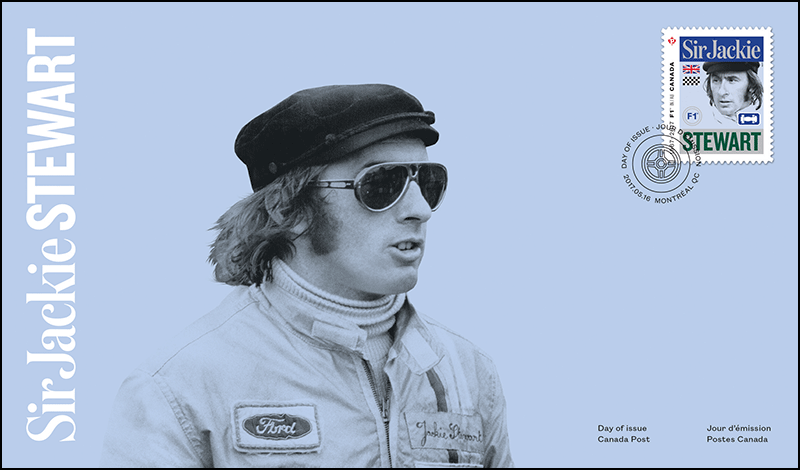
 About Formula 1®
About Formula 1® MONTRÉAL, May 11, 2017 /CNW/ – Legendary drivers harnessing awesome power at incredible speed with skill, daring and courage: that’s how Formula 1 auto races thrill fans in Montréal, in Canada and around the world.
MONTRÉAL, May 11, 2017 /CNW/ – Legendary drivers harnessing awesome power at incredible speed with skill, daring and courage: that’s how Formula 1 auto races thrill fans in Montréal, in Canada and around the world. TORONTO, May 9, 2017 – At an event today in downtown Toronto, Canada Post unveiled a stamp commemorating the 2005 passage of the Civil Marriage Act, which made marriage equality the law throughout Canada. Grassroots activists, government officials and community members attended the unveiling, catching the first glimpse of the new stamp, which features the iconic rainbow symbol. The unveiling was held at and in partnership with The 519, a City of Toronto agency committed to the health, happiness and full participation of LGBTQ communities.
TORONTO, May 9, 2017 – At an event today in downtown Toronto, Canada Post unveiled a stamp commemorating the 2005 passage of the Civil Marriage Act, which made marriage equality the law throughout Canada. Grassroots activists, government officials and community members attended the unveiling, catching the first glimpse of the new stamp, which features the iconic rainbow symbol. The unveiling was held at and in partnership with The 519, a City of Toronto agency committed to the health, happiness and full participation of LGBTQ communities. But the road to achieving marriage equality in Canada began long before 2005. For decades, LGBTQ activists and supporters from coast to coast to coast had fought for the rights of their communities, including the right to marry. In the late 1990s, the community began to achieve significant victories.
But the road to achieving marriage equality in Canada began long before 2005. For decades, LGBTQ activists and supporters from coast to coast to coast had fought for the rights of their communities, including the right to marry. In the late 1990s, the community began to achieve significant victories. Similar court battles were also taking place in provinces across the country, and more provincial courts issued rulings legalizing marriage equality: B.C. in July 2003, followed by Quebec, Manitoba, and Nova Scotia in 2004. Finally, on July 20, 2005, the government of Canada passed the federal legislation that legalized marriage equality across the country, making Canada the fourth country in the world and the first outside of Europe to grant same-sex couples the right to marry the one they loved.
Similar court battles were also taking place in provinces across the country, and more provincial courts issued rulings legalizing marriage equality: B.C. in July 2003, followed by Quebec, Manitoba, and Nova Scotia in 2004. Finally, on July 20, 2005, the government of Canada passed the federal legislation that legalized marriage equality across the country, making Canada the fourth country in the world and the first outside of Europe to grant same-sex couples the right to marry the one they loved. TORONTO, May 9, 2017 /CNW/ – The 519 is excited to be partnering with Canada Post for an event that will highlight the struggles for marriage equality in Canada, and celebrate this important moment in the country’s history. In this event, as part of the Canada 150 celebrations, Canada Post is releasing a new stamp to commemorate the hard-fought right of equal marriage in Canada.
TORONTO, May 9, 2017 /CNW/ – The 519 is excited to be partnering with Canada Post for an event that will highlight the struggles for marriage equality in Canada, and celebrate this important moment in the country’s history. In this event, as part of the Canada 150 celebrations, Canada Post is releasing a new stamp to commemorate the hard-fought right of equal marriage in Canada.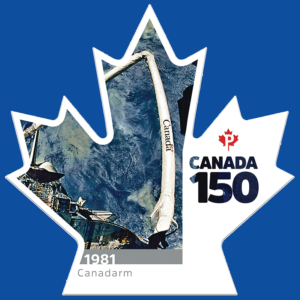 TORONTO, May 4, 2017 – Canadian Space Agency astronaut Jeremy Hansen was at a Toronto school to unveil a stamp with an image of Canada’s most famous robotics accomplishment – the Canadarm. The stamp commemorates Canada’s achievements in space, science, technology and innovation.
TORONTO, May 4, 2017 – Canadian Space Agency astronaut Jeremy Hansen was at a Toronto school to unveil a stamp with an image of Canada’s most famous robotics accomplishment – the Canadarm. The stamp commemorates Canada’s achievements in space, science, technology and innovation.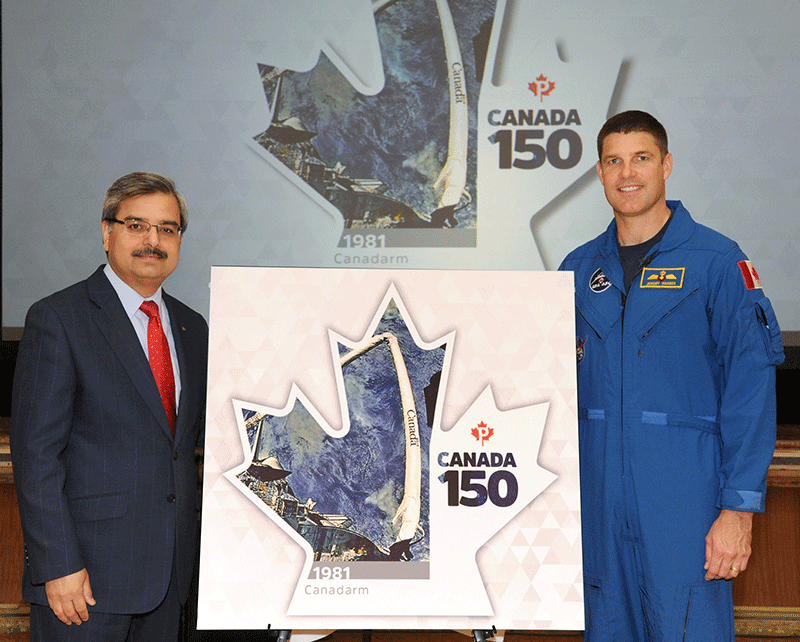
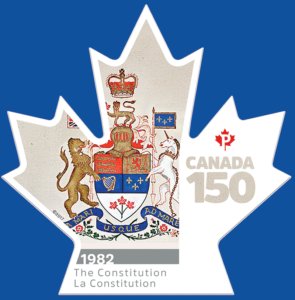 OTTAWA, May 3, 2017 – Only a peaceful nation achieves full independence with the stroke of a pen, thousands of citizens erupting in cheers and a band striking up a fanfare – which is how Canada brought its Constitution home.
OTTAWA, May 3, 2017 – Only a peaceful nation achieves full independence with the stroke of a pen, thousands of citizens erupting in cheers and a band striking up a fanfare – which is how Canada brought its Constitution home.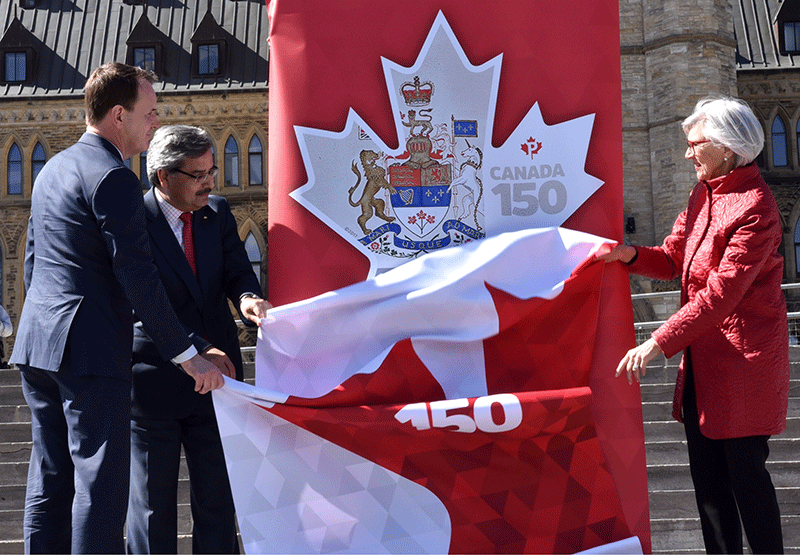 [Photo, left to right: Steven MacKinnon, Member of Parliament for Gatineau, Parliamentary Secretary to the Minister of Public Services & Procurement; Deepak Chopra, President and Chief Executive Officer, Canada Post; The Right Honourable Beverley McLachlin, P.C., Chief Justice of Canada. Photo by Canada Post/Denis Drever.]
[Photo, left to right: Steven MacKinnon, Member of Parliament for Gatineau, Parliamentary Secretary to the Minister of Public Services & Procurement; Deepak Chopra, President and Chief Executive Officer, Canada Post; The Right Honourable Beverley McLachlin, P.C., Chief Justice of Canada. Photo by Canada Post/Denis Drever.]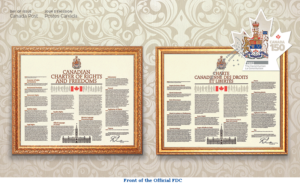 Under the Charter, Canadians have the right to freedom of speech, religion, thought and expression, as well as freedom of the press, of mobility, of association and of assembly, among others. The Charter also enshrines citizens’ rights to vote, to run for office, to a fair trial, to security and privacy, as well as important linguistic rights. The Charter also confers equality upon every individual in Canada – regardless of race, religion, national or ethnic origin, colour, sex, age or physical or mental disability. Governments must not discriminate on these grounds in laws or programs.
Under the Charter, Canadians have the right to freedom of speech, religion, thought and expression, as well as freedom of the press, of mobility, of association and of assembly, among others. The Charter also enshrines citizens’ rights to vote, to run for office, to a fair trial, to security and privacy, as well as important linguistic rights. The Charter also confers equality upon every individual in Canada – regardless of race, religion, national or ethnic origin, colour, sex, age or physical or mental disability. Governments must not discriminate on these grounds in laws or programs.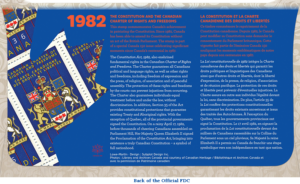 A
A 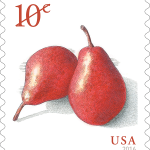 5178 10¢ Red Pears, serpentine die cut 11¼x11
5178 10¢ Red Pears, serpentine die cut 11¼x11
 a. Block of 10, #5180-5189
a. Block of 10, #5180-5189

